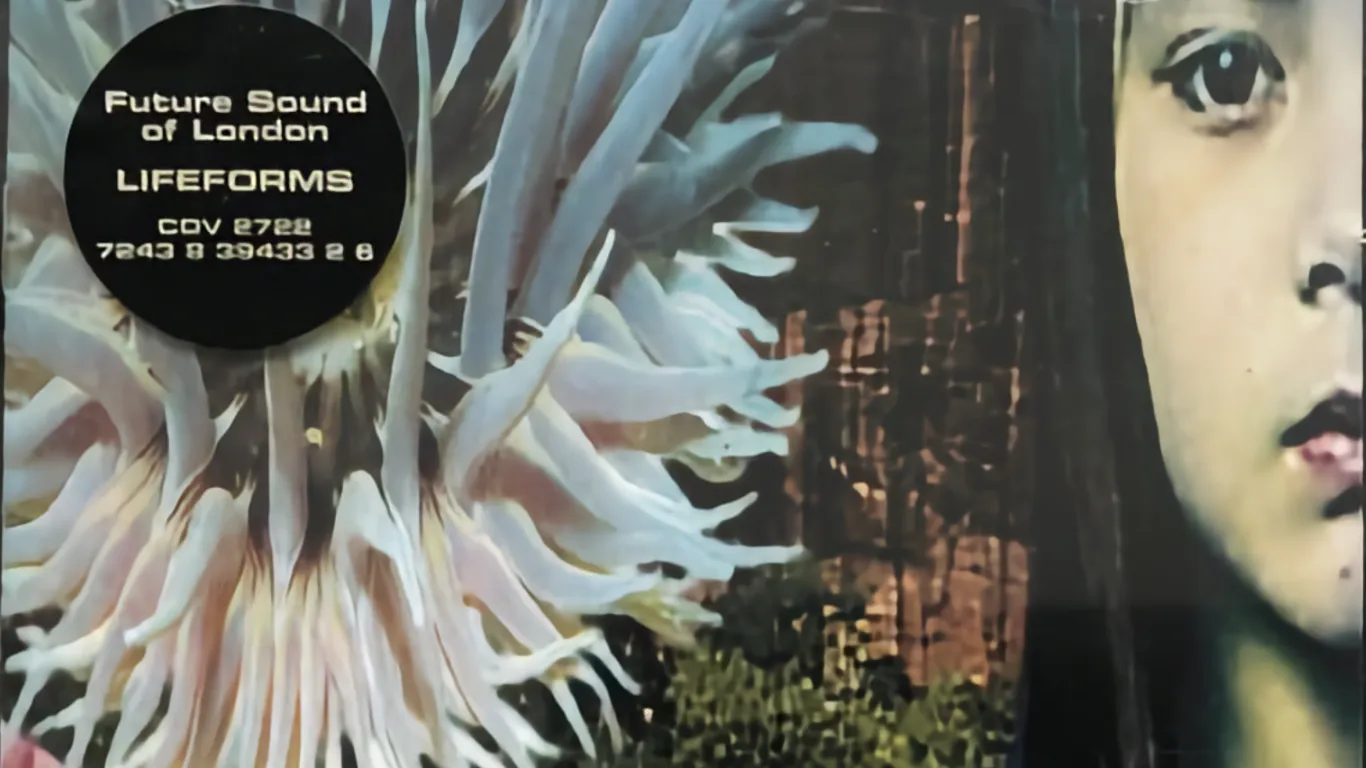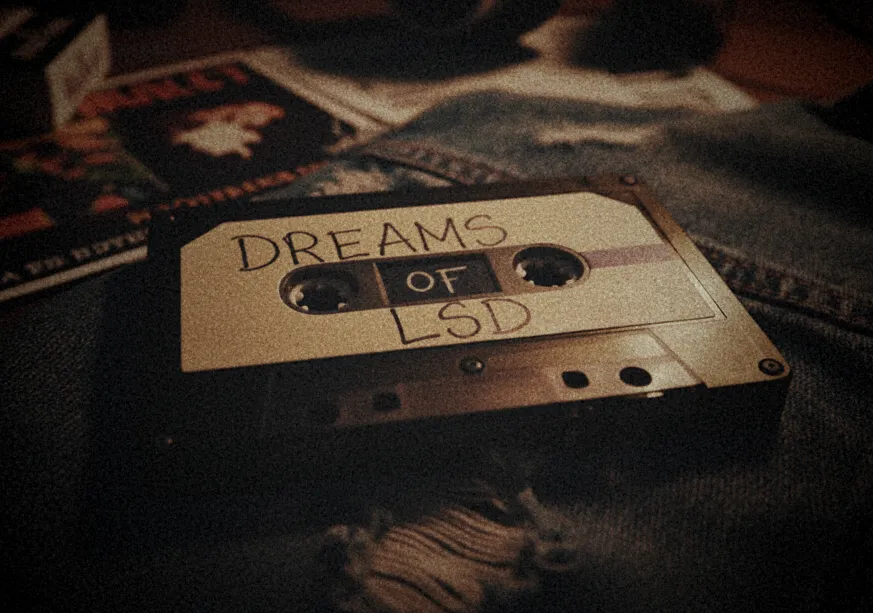
Into Ambient 1 - Lifeforms – The Future Sound of London
A personal journey to the albums that introduced me to ambient music and shaped my musical identity.
Introduction: Why This Series?
As Logic Moon and as well Aethery Fields, I navigate the vastness of ambient music today, creating soundscapes and atmospheric textures. But this journey didn’t begin with the first synthesizer or DAW – it began with listening. With moments when music became more than entertainment, when it became a portal.
This blog series is a journey to those albums that shaped me. I want to give you insight into the key moments that transformed a passive listener into an active creator. These are personal stories about albums that not only determined my musical direction but also changed my relationship with sound itself.
Before I could make music, I was a collector of moods. I searched for sounds that expressed more than words could – for atmospheres that opened spaces instead of filling them. Ambient was always more than a genre to me: it was a way of perceiving the world, a form of meditation, a soundtrack for inner landscapes.
I want to begin with an album that represented a turning point for me: “Lifeforms” by The Future Sound of London.
The Mysterious Cassette
I was sixteen when a school friend handed me a cassette. No case, no booklet – just a handwritten label: “Dreams of LSD”. Exactly 90 min of music that I had never heard before. Music that didn’t feel like music, but like opening a door to another state of consciousness.
This cassette became my constant companion. It was there when I walked through the streets at night, when I tried to fall asleep, when I just wanted to sit and exist. I particularly remember the school trip: under a blanket, with a friend, each of us with one earphone, we sank into these soundworlds while outside the other teenagers made their noise.

But who had created this incredible music, I didn’t know. Years passed. The cassette continued to accompany me, became part of my inner soundtrack, but the creator remained in the dark – a nameless mystery.
Until that coincidence in a record store. I was browsing through the CDs, and suddenly I held it in my hands: I didn’t recognize the cover, but when I put the CD in and heard the first notes, I knew immediately. This was it. After all those years, the music had a name: Lifeforms by The Future Sound of London.
Sound Morphology
What distinguished “Lifeforms” from so much electronic music of its time was its organic ability to transform. Nothing here was static, nothing set in stone. The music breathed, grew, changed its form like a living organism.
A track begins with a precise beat, clearly structured, almost danceable – and then, imperceptibly, it begins to dissolve. The kick drum becomes softer, loses its contour, becomes a dull pulsing that no longer marks the ground but mimics the heartbeat of a dreaming body. What was just techno opens up into spherical soundscapes where synthesizer pads layer over each other like fog banks.
Elements from rave and techno – those hard, urban sounds of the clubs – weren’t simply copied here, but sent through an alchemical process. They morphed into pulsating soundscapes that had more to do with the vastness of the cosmos than with the confines of a dancefloor. An acid bassline could suddenly transform into a hum that sounded like the buzzing of alien insects, only to dissolve into complete silence seconds later.
And then there were the field recordings – a concept that was completely foreign to me until this album. Suddenly there was the cracking of twigs, the rustling of wind, voices that appeared out of nowhere and disappeared again. These sounds weren’t decorative, they were structural. They were the fabric that connected the electronic elements with an almost tangible reality. It was as if the music wasn’t happening in the headphones, but in a space that simultaneously existed and didn’t exist.
Global Sound Palette – The World as Instrument
What also makes “Lifeforms” such a rich listening experience is the incredibly diverse approach to sampling and sound selection. The Future Sound of London acted like musical archaeologists and ethnologists at once – they dug into the world’s sound archives and wove from them a fascinating sonic tapestry that connected continents and cultures.
Percussion elements from Africa, Asia, and the Middle East merge with the pulsating oscillations of analog modular synths. A tabla rhythm can suddenly connect with the metallic hiss of a Roland TR-909 hi-hat, organic wooden sounds meet synthetic drones that seem to come from the depths of a modular synthesizer. This cultural collage never feels touristy or pandering.
The samples aren’t simply quoted or laid over a beat. They’re deconstructed, time-stretched, broken down into their harmonic components and reassembled. A sampled voice becomes a pad, a percussion loop loses its rhythmic context and becomes a textural element floating between the layers. Modular synth sequences that could actually sound cold and technical become organic, almost human through subtle modulations and filter movements.
This world music approach was revolutionary in the nineties. While many artists worked either strictly electronically or acoustically, “Lifeforms” showed that these boundaries were artificial. A synthesizer could sound just as natural as a flute, and a traditional drum could seem just as futuristic as a drum machine – it only depended on how you related these elements to each other.
This opened a completely new perspective for me: music was no longer defined by genres or origin, but by sound itself. Everything could be material, everything could be part of a greater vision. This insight would later fundamentally shape my own approach to ambient production.
Psychedelic Dimensions
It was no coincidence that my mysterious cassette bore the name “Dreams of LSD”. “Lifeforms” possesses a deeply psychedelic quality that goes far beyond mere sonic experiments. It’s music that changes perception, that stretches and compresses time, that evokes inner images without dictating them.
The constant transformations, the merging of seemingly opposing elements, the layering of reality levels – all this creates a trance-like state in which the usual categories of space and time lose their validity. You don’t just listen, you dive in. The music becomes a kind of acoustic kaleidoscope that reveals new patterns with each listening, opens up new depths.
For me as a sixteen-year-old, this was a revelation: music could be a vehicle, a means of transport to other states of consciousness. The journey took place in the sound itself.
“Lifeforms” taught me that electronic music doesn’t have to be binary – not either beat or ambient, not either artificial or organic. It can be all of that simultaneously, and the transition can be so gentle that you only notice it when you’ve already arrived on the other side.
The Circle Closes
“Lifeforms” was my entry ticket into the world of ambient music. Without this album, without this mysterious cassette, I might never have conceived that music could exist without conventional structures, without hooks and refrains – that it could be a space instead of a sequence.
Years later, when I began producing music myself, I initially moved in the techno and house sphere. But again and again I found myself composing ambient pieces, atmospheric interludes that actually had nothing to do with the club. It was as if “Lifeforms” had planted a seed in me that patiently waited to germinate.
Then in 2014, my final step into the deepness: I stayed completely with ambient. But if I’m honest, this music had already been an essential part of my expression before. The rhythmic structures were just a surface, beneath which always lay this longing for the atmospheric, the weightless, the transformative – exactly what I had first felt as a sixteen-year-old under that blanket on the school trip.
Today, as Logic Moon, I try to carry forward exactly what fascinated me about “Lifeforms”: the ability to dissolve boundaries, to connect sounds from different worlds, to create spaces in which the listener can lose themselves. Every time I work on a track, I still hear that cassette in the back of my mind.
“Lifeforms” is timeless. Not because it’s perfect, but because it shows what music can be when you free it from all expectations. It teaches us that the journey is more important than the destination, that transformation is the natural state of sound, and that the deepest musical experiences often take place beyond words.
I can only encourage you to discover or rediscover this album yourself. Take time for it. Don’t listen to it casually, but make it an active experience. Perhaps it will become one of those key moments for you too.
Listen to “Lifeforms” here:
Youtube:
---